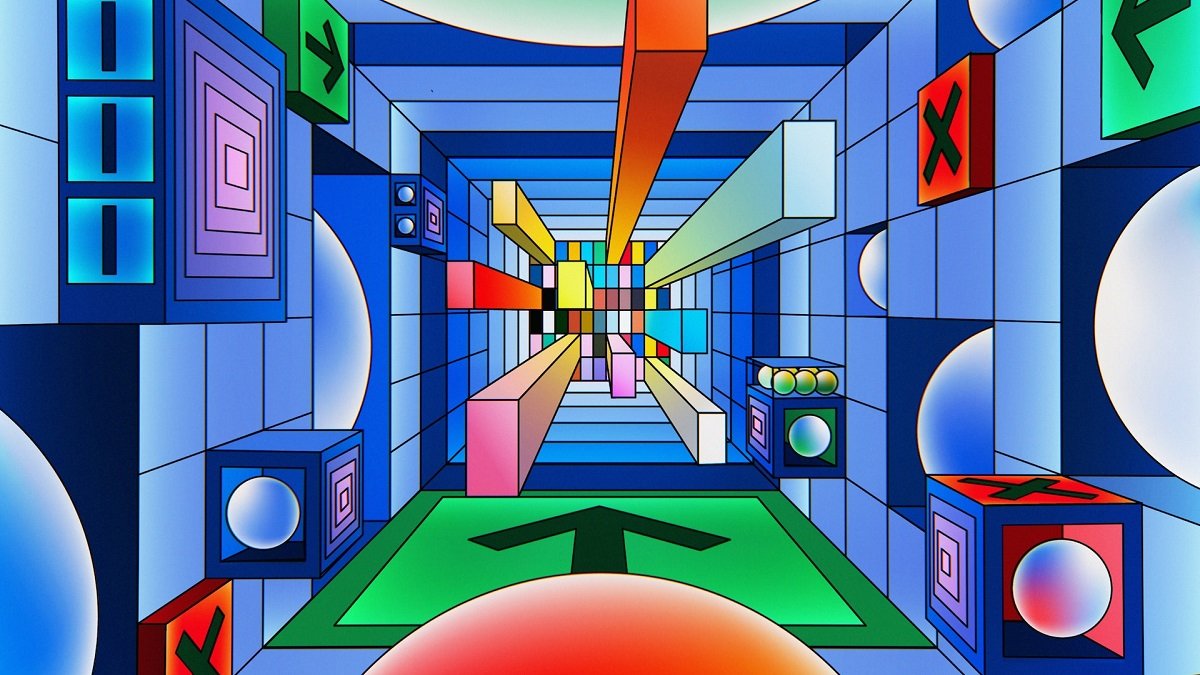Applying the IKEA effect to overcome remote discovery challenges.
Design story.
When participants actively contribute to the creation or completion of a task, they develop a sense of ownership and investment in the outcome, similar to assembling furniture, hence the design principle is often called the Ikea effect. When working remotely, one of the key hurdles is achieving the same level of engagement as onsite meetings. Facilitators can employ gamification to remote group activities to improve engagement from participants. This story describes a game I created to gather information required to define personas, service blueprints, and user needs. Working in this way helped to overcome several challenges and in the end participants had an increased sense of ownership of the results due to the attributes of the game and the experience overall.
Client.
Conagra Brands is a leading CPG headquartered in Chicago, Illinois. With a diverse range of products under popular brand names such as Healthy Choice, Marie Callender's, and Slim Jim, their brands have become food staples in kitchens around the world. The company's success globally, depends on management of a very complex supply chain. The project, involves a UX agency, technology supplier, and stakeholders from each area of the client’s supply chain, to deliver a transformative roadmap.
Challenge.
In the discovery phase of this project, my team was responsible for delivering the current and future state user needs, personas, service blueprints. To do this we would need to gather information remotely, as both our team and the required participants were located in Chicago, London, California, and even Singapore. Client participants included the CFO, Brand Director, Sales Director, Head of Data Science and other senior leaders - in total there were at least 15 client side stakeholders to include. In addition to gathering information from the client, we had to include the technology supplier, Accenture in our discovery as they would play a long term role in the overall transformation. Remote discovery with senior stakeholders can present logistic and engagement challenges - how could we make this experience effective?
Approach.
“What if we play a game instead?”
During kick-off discussions I had learned that there had previously been an attempted discovery project that had failed for many reasons. Asking the same participants would be an added challenge that required a novel approach. After reviewing the information provided during the previous discovery project, I wondered if it was possible to start engaging stakeholders by validating information instead of requesting it all over again. This was the starting point for an activity, that soon developed into a game made possible by Figjam and Microsoft Teams.

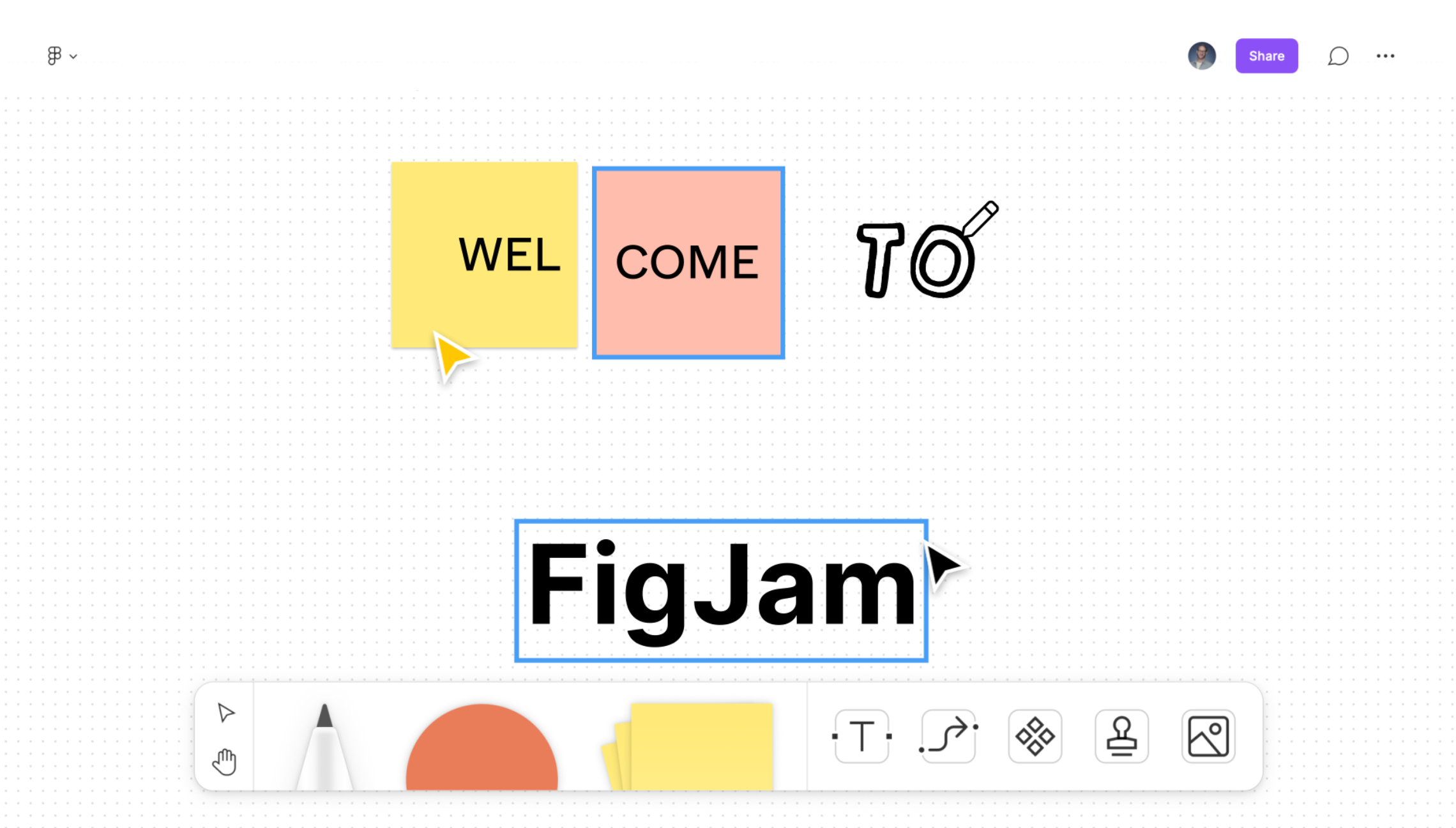
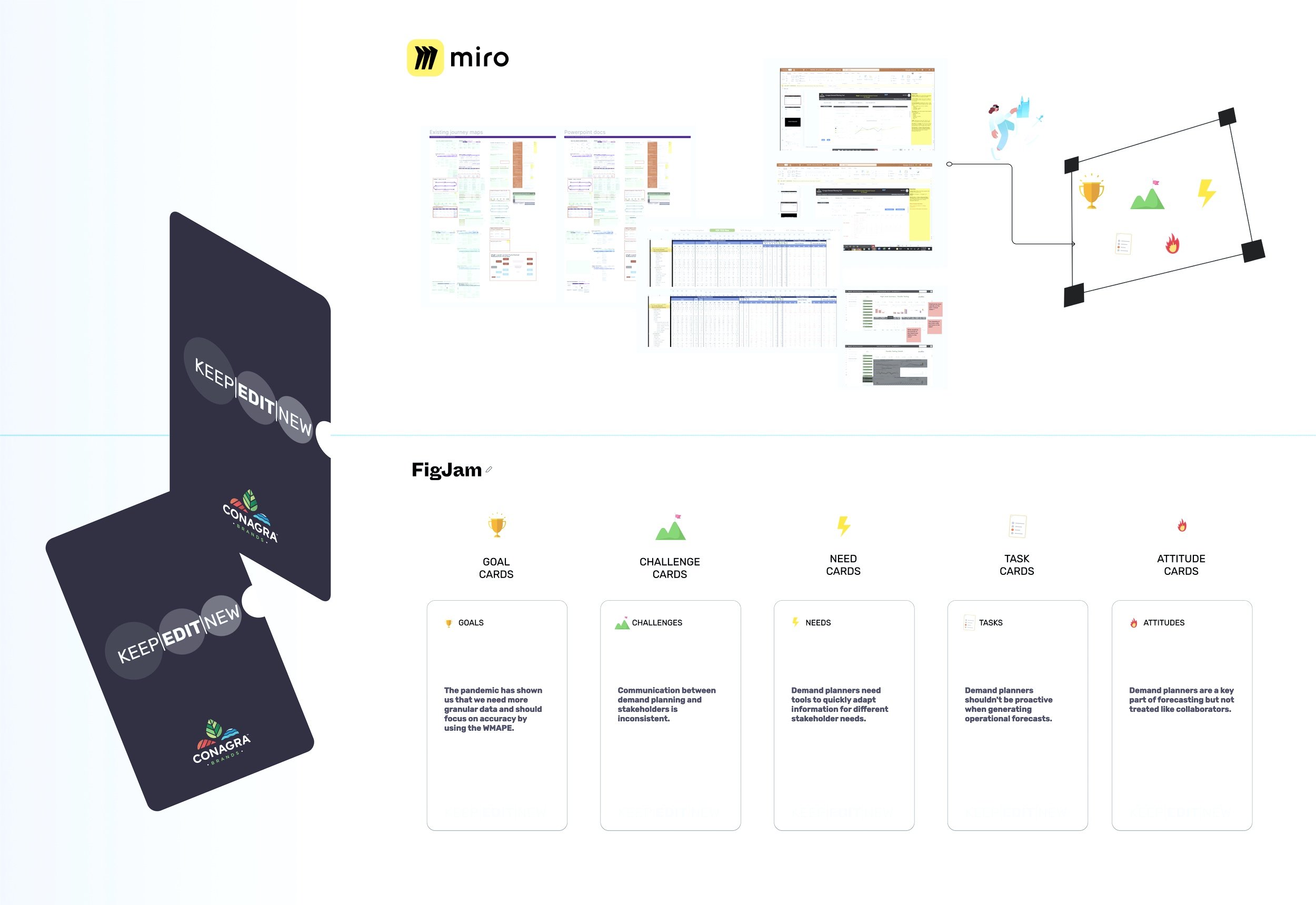

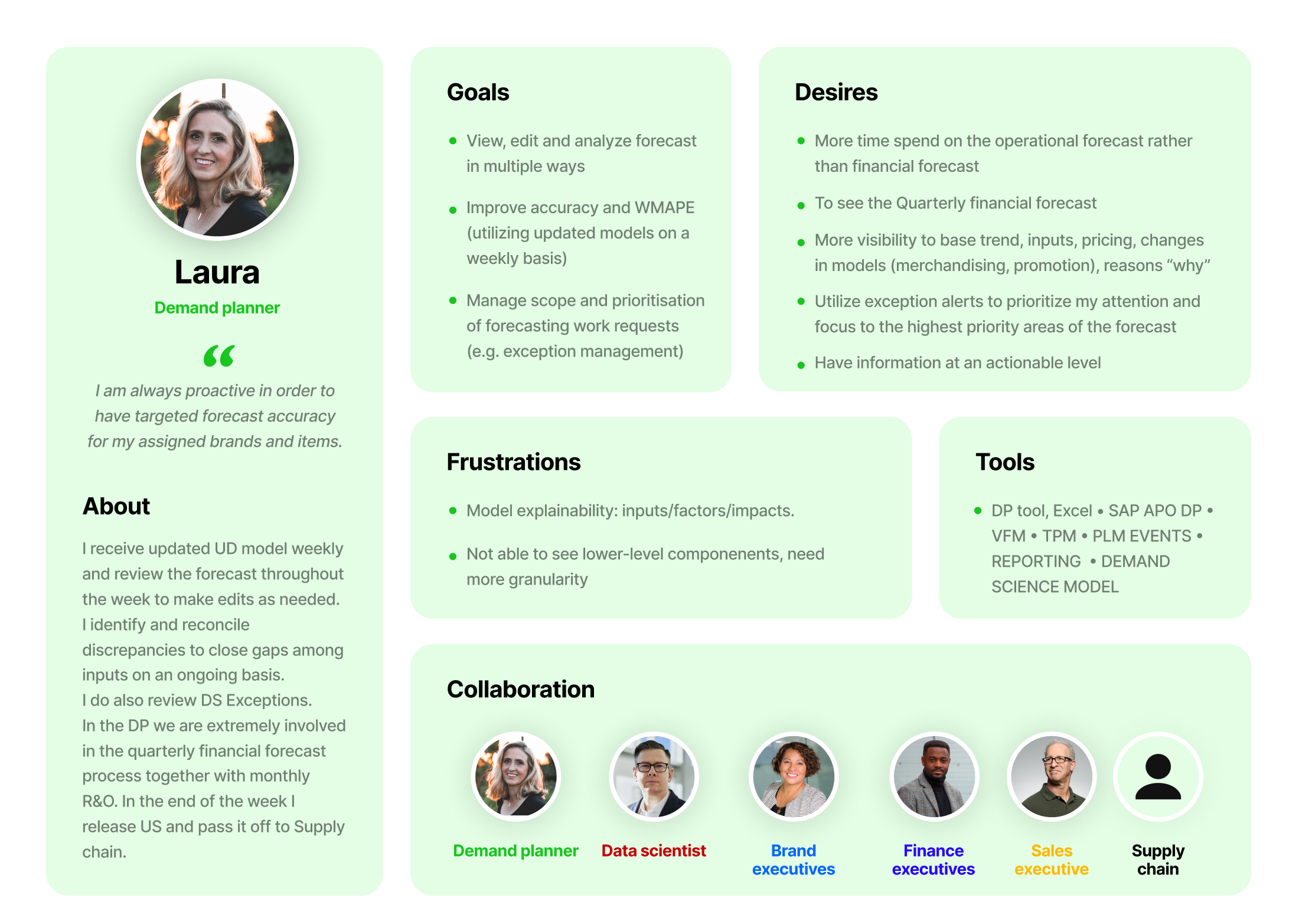

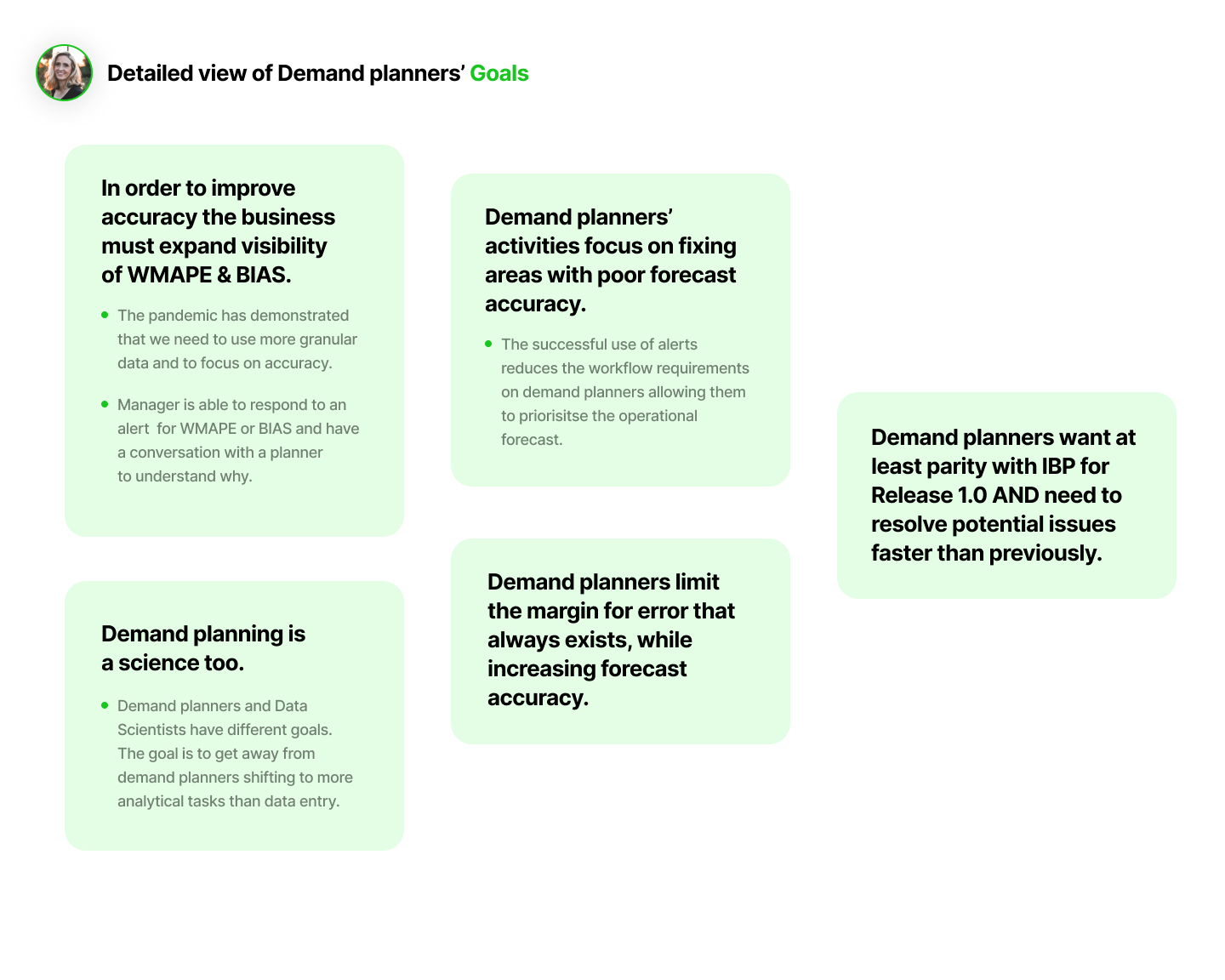

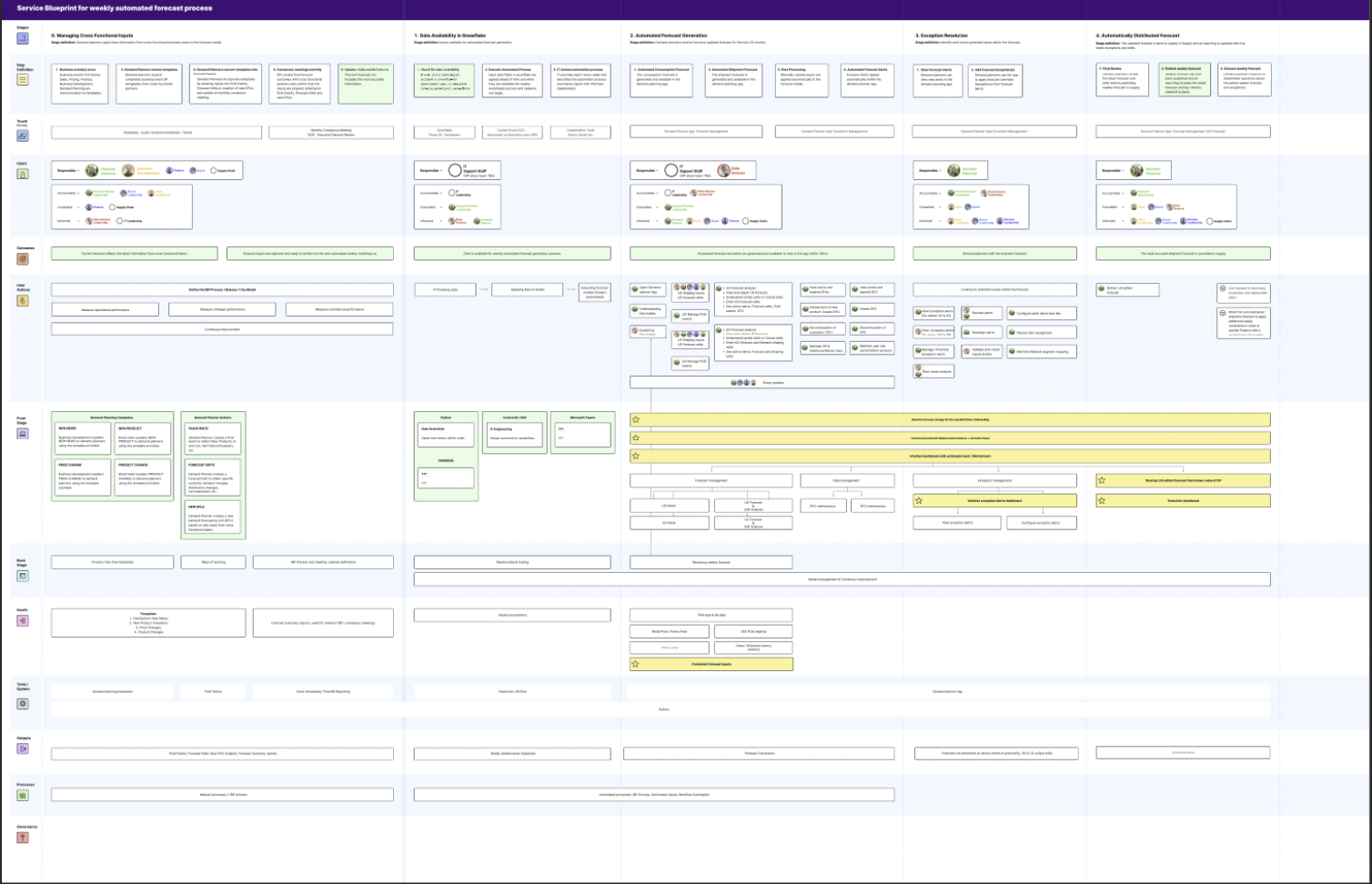
Design.
The game is KEEP | EDIT | NEW
We inherited lots of useful information and needed to know if it was useful. It took a few days to prepare, but we were able to review information and turn them into cards based on 5 categories (needs, challenges, attitudes, goals, and tasks). Conveniently, these categories would also be useful when creating the personas and user stories which were our responsibility. The job for participants is to validate the information by placing each card in the right space or KEEP. After sorting the cards, a discussion allowed participants to EDIT cards or create NEW cards per category.
I determined that we could quickly validate the information we inherited, and gain more insight by discussing each business areas unique choices.
Results.
KEEP | EDIT | NEW was a success and remains in my Figma toolbox for reuse.
Ultimately, we used design to solve a discovery challenge during a discovery project. This gamified approach helped us build trust with the client and demonstrate our UX and design thinking skills by doing the job quickly.
Watching people play your game is oddly satisfying. Watching the directors of marketing, data science, and sales move cards in a FigJam board knowing that each move delivers the results you want is incredible. Behind the scenes, each card was a component in Figma, and we developed a pretty clever workflow to transfer existing research from Miro and Powerpoint into cards. To provide an idea of the scale of information - we converted 30 PPT decks, into more than 300 Miro frames before converting those into 400 cards. Gameplay allowed 10 - 15 minutes to rapidly sort the cards into the right categories so we did some further improvements using some synthesis techniques to narrow our deck of cards to 50 cards per category (250 total cards).
Were there some improvements made from the original design? YES. But in general, participants took to the activity and interface easily and we made a complex task, look simple.
You can do it.
If you are interested in ways to overcome remote challenges, I can help.


